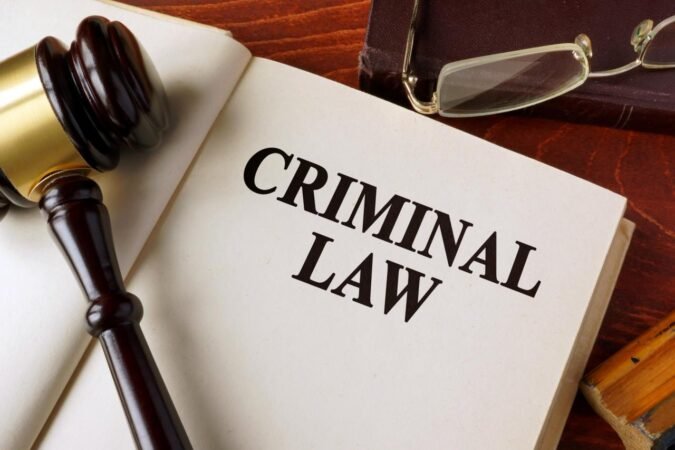
What is Stand Your Ground Law? It’s a legal doctrine that allows individuals to use deadly force in self-defense without first attempting to retreat from a perceived threat. These laws, which vary from state to state, have sparked intense debate, raising questions about individual rights, public safety, and the potential for misuse.
The Stand Your Ground concept emerged in the 1980s and gained national attention with the 2012 shooting of Trayvon Martin in Florida, which involved a controversial application of the law. This incident ignited widespread protests and fueled the ongoing discussion about the potential for racial bias and disparities in the application of Stand Your Ground laws.
Introduction to Stand Your Ground Laws

Stand Your Ground laws, also known as “castle doctrine” laws, are a category of legislation that allows individuals to use deadly force in self-defense without a duty to retreat from a perceived threat. These laws have sparked considerable debate and controversy, raising questions about their impact on public safety and the administration of justice.
The core principle of Stand Your Ground laws is to provide individuals with the legal right to use lethal force in self-defense, even if they could have safely retreated from a dangerous situation. This principle, rooted in the concept of “castle doctrine,” traditionally applied only to individuals’ homes, allowing them to use force against intruders without a duty to retreat. However, Stand Your Ground laws have expanded this principle to encompass public spaces, allowing individuals to use deadly force in any location where they feel threatened, even if they could have safely retreated.
Historical Development of Stand Your Ground Laws
The historical development of Stand Your Ground laws in the United States can be traced back to the concept of “castle doctrine,” which originated in English common law. This doctrine, dating back to the 17th century, provided individuals with the right to use force to defend their homes against intruders, without a duty to retreat.
In the United States, the concept of castle doctrine was incorporated into state laws, typically codified in criminal codes or self-defense statutes. However, these early laws generally required individuals to retreat if possible before using deadly force. This requirement, known as the “duty to retreat,” was intended to limit the use of lethal force and prevent unnecessary violence.
In the 1980s, a movement emerged advocating for the elimination of the duty to retreat requirement in self-defense laws. This movement gained momentum in the 1990s, with several states enacting “Stand Your Ground” laws that allowed individuals to use deadly force without a duty to retreat. Florida was one of the first states to adopt a Stand Your Ground law in 2005, which subsequently served as a model for other states.
Arguments for Stand Your Ground Laws
Proponents of Stand Your Ground laws argue that these laws provide individuals with a greater degree of protection from violent attacks. They contend that requiring individuals to retreat from a dangerous situation could put them at greater risk of harm, especially in situations where escape is not feasible or where retreat could be perceived as an act of weakness. They also argue that Stand Your Ground laws deter criminals by sending a clear message that potential victims will not hesitate to defend themselves.
- Stand Your Ground laws empower individuals to defend themselves against threats, enhancing personal safety.
- These laws create a more level playing field by removing the burden of retreat, which can be difficult or impossible in certain situations.
- Stand Your Ground laws deter criminal activity by signaling that potential victims will not be passive targets.
Arguments Against Stand Your Ground Laws
Opponents of Stand Your Ground laws argue that these laws increase the risk of violence and lead to an escalation of confrontations. They contend that the elimination of the duty to retreat encourages individuals to use deadly force in situations where less drastic measures might be appropriate. They also argue that Stand Your Ground laws disproportionately affect minority communities, particularly African Americans, who are more likely to be targeted by police and private citizens in self-defense claims.
- Stand Your Ground laws encourage individuals to use deadly force, potentially leading to unnecessary violence and escalating confrontations.
- These laws create a “shoot first, ask questions later” mentality, undermining the principle of de-escalation and conflict resolution.
- Stand Your Ground laws have been associated with an increase in the number of shootings, particularly in minority communities.
- The subjective nature of self-defense claims under Stand Your Ground laws can lead to racial bias and miscarriages of justice.
Legal Framework of Stand Your Ground Laws

Stand Your Ground laws are a complex legal concept that has been the subject of much debate and scrutiny. Understanding the legal framework of these laws is crucial to appreciating their impact on self-defense claims and the broader criminal justice system.
Legal Definitions and Elements of the “Stand Your Ground” Defense, What is stand your ground law
Stand Your Ground laws, also known as “castle doctrine” laws, generally allow individuals to use deadly force in self-defense without a duty to retreat, even if they have the opportunity to do so. This legal framework aims to provide individuals with a greater degree of protection when facing imminent threats. The core elements of the “Stand Your Ground” defense typically include:
* Imminent threat: The individual must reasonably believe that they are facing an imminent threat of death or serious bodily injury.
* Reasonable force: The force used must be reasonable and necessary to defend against the perceived threat.
* No duty to retreat: The individual is not required to retreat before using deadly force, even if they can safely do so.
These elements are often subject to interpretation by courts, and the specific requirements may vary slightly from state to state.
Comparison of Legal Frameworks Across Different States
Stand Your Ground laws have been adopted in various forms across the United States. While the core principle of self-defense without a duty to retreat remains consistent, there are notable differences in the specific legal frameworks:
- Triggering events: Some states allow the use of deadly force in self-defense against a wider range of threats, such as property crimes or even verbal threats. Other states restrict the defense to situations involving imminent threats of serious bodily injury or death.
- Burden of proof: The burden of proof in Stand Your Ground cases may differ across states. In some states, the defendant must prove that they met the elements of the defense, while in others, the prosecution must prove that the defendant did not meet the elements.
- Stand Your Ground immunity: Some states provide absolute immunity from prosecution for individuals who successfully invoke the Stand Your Ground defense. Other states provide a limited immunity, allowing the defendant to avoid prosecution only if they can demonstrate that they met the elements of the defense.
Legal Exceptions and Limitations
Despite the broad scope of Stand Your Ground laws, there are certain legal exceptions and limitations:
- Initial aggressor: Individuals who initiate a confrontation or use excessive force generally cannot invoke the Stand Your Ground defense.
- Duty to retreat: Some states retain a duty to retreat in certain situations, such as when the individual is in their home but can safely retreat.
- Criminal history: Individuals with a history of violent crimes may be barred from invoking the Stand Your Ground defense.
- Mental state: The individual’s mental state at the time of the incident may be considered in determining whether the use of deadly force was justified.
Ethical and Social Considerations
Stand Your Ground laws, while intended to protect individuals from imminent threats, raise significant ethical and social concerns. The application of these laws can impact individual rights, societal justice, and create potential for disparities in the legal system.
Individual Rights and Societal Justice
Stand Your Ground laws raise complex questions about the balance between individual rights and societal justice. On the one hand, proponents argue that these laws empower individuals to defend themselves against imminent threats, enhancing personal safety and upholding the right to self-defense. On the other hand, critics contend that the laws encourage vigilantism and create a climate of fear, potentially leading to excessive force and unnecessary loss of life.
“The right to self-defense is a fundamental human right, and Stand Your Ground laws provide individuals with the legal framework to exercise this right.” – Proponent of Stand Your Ground Laws
“Stand Your Ground laws create a culture of fear and encourage individuals to resort to violence, rather than seeking peaceful resolutions.” – Critic of Stand Your Ground Laws
Racial Bias and Disparities
Research has shown that Stand Your Ground laws can exacerbate existing racial disparities in the criminal justice system. Studies have found that Black individuals are more likely to be arrested, charged, and convicted in cases involving Stand Your Ground defenses, even when the facts of the case are similar to those involving White individuals. This disparity is attributed to factors such as implicit bias among law enforcement officers, racial profiling, and the perception that Black individuals are more likely to pose a threat.
“Stand Your Ground laws disproportionately impact Black individuals, leading to higher rates of arrest, charges, and convictions in cases involving self-defense.” – Study by the American Civil Liberties Union
“The application of Stand Your Ground laws is often influenced by implicit bias, leading to discriminatory outcomes for Black individuals.” – Research by the Equal Justice Initiative
Case Study: The Shooting of Trayvon Martin
The shooting of Trayvon Martin, a 17-year-old Black teenager, by George Zimmerman, a neighborhood watch volunteer, in 2012, is a stark example of the societal impact of Stand Your Ground laws. Zimmerman was acquitted of murder charges, claiming self-defense under Florida’s Stand Your Ground law. The case sparked national outrage and ignited a debate about racial bias, gun violence, and the role of Stand Your Ground laws in society.
“The Trayvon Martin case exposed the potential for racial bias and injustice in the application of Stand Your Ground laws.” – Commentary by the National Association for the Advancement of Colored People
“The Zimmerman trial highlighted the need for a thorough examination of Stand Your Ground laws and their potential to exacerbate racial disparities in the justice system.” – Opinion piece by the New York Times
Ongoing Debates and Controversies: What Is Stand Your Ground Law

Stand Your Ground laws have sparked intense debate and controversy since their inception. While proponents argue that these laws empower individuals to defend themselves against imminent threats, critics raise concerns about their potential for misuse and their disproportionate impact on certain communities.
Media Coverage and Public Opinion
Media coverage has played a significant role in shaping public perception of Stand Your Ground laws. High-profile cases involving these laws have often been sensationalized, fueling public debate and anxiety.
- The case of Trayvon Martin, a young Black teenager who was fatally shot by George Zimmerman in 2012, ignited widespread protests and calls for reform of Stand Your Ground laws. The media coverage of this case, which highlighted racial disparities in the application of these laws, significantly influenced public opinion and sparked national conversations about racial justice and self-defense.
- Media portrayals of Stand Your Ground laws can influence public perception of the law, leading to misunderstandings and misinterpretations. For example, some media reports have emphasized the “shoot first, ask questions later” aspect of the law, while others have focused on the potential for its misuse.
Notable Cases and Their Consequences
Several notable cases have demonstrated the complex legal and social implications of Stand Your Ground laws.
- In the 2012 case of George Zimmerman, who was acquitted of murder charges after fatally shooting Trayvon Martin, the application of Stand Your Ground law was widely scrutinized. The case highlighted the potential for the law to be used as a defense in situations where there is a lack of clear evidence of an imminent threat.
- In the 2014 case of Michael Dunn, who was convicted of manslaughter for shooting Jordan Davis, a Black teenager, after a dispute over loud music, the jury’s decision to convict Dunn on lesser charges than murder raised questions about the interpretation of the Stand Your Ground law.
Concluding Remarks
The debate surrounding Stand Your Ground laws continues, with arguments centered on individual rights, public safety, and the potential for misuse. As these laws continue to evolve, it’s crucial to understand their complexities and the potential consequences for individuals and society as a whole.
Questions Often Asked
What are the main arguments in favor of Stand Your Ground laws?
Proponents argue that these laws empower individuals to defend themselves against imminent threats and reduce the risk of becoming victims of violent crime. They believe that requiring individuals to retreat before using deadly force could put them in further danger.
What are the main arguments against Stand Your Ground laws?
Opponents argue that these laws can lead to an increase in violence and unnecessary shootings, especially in cases of racial bias or misinterpretations of the law. They also worry that these laws may discourage people from de-escalating situations or seeking alternative solutions.
Are Stand Your Ground laws the same in every state?
No, the legal framework of Stand Your Ground laws varies from state to state. Some states have adopted the “Stand Your Ground” doctrine, while others have more restrictive laws that require individuals to retreat if possible.





